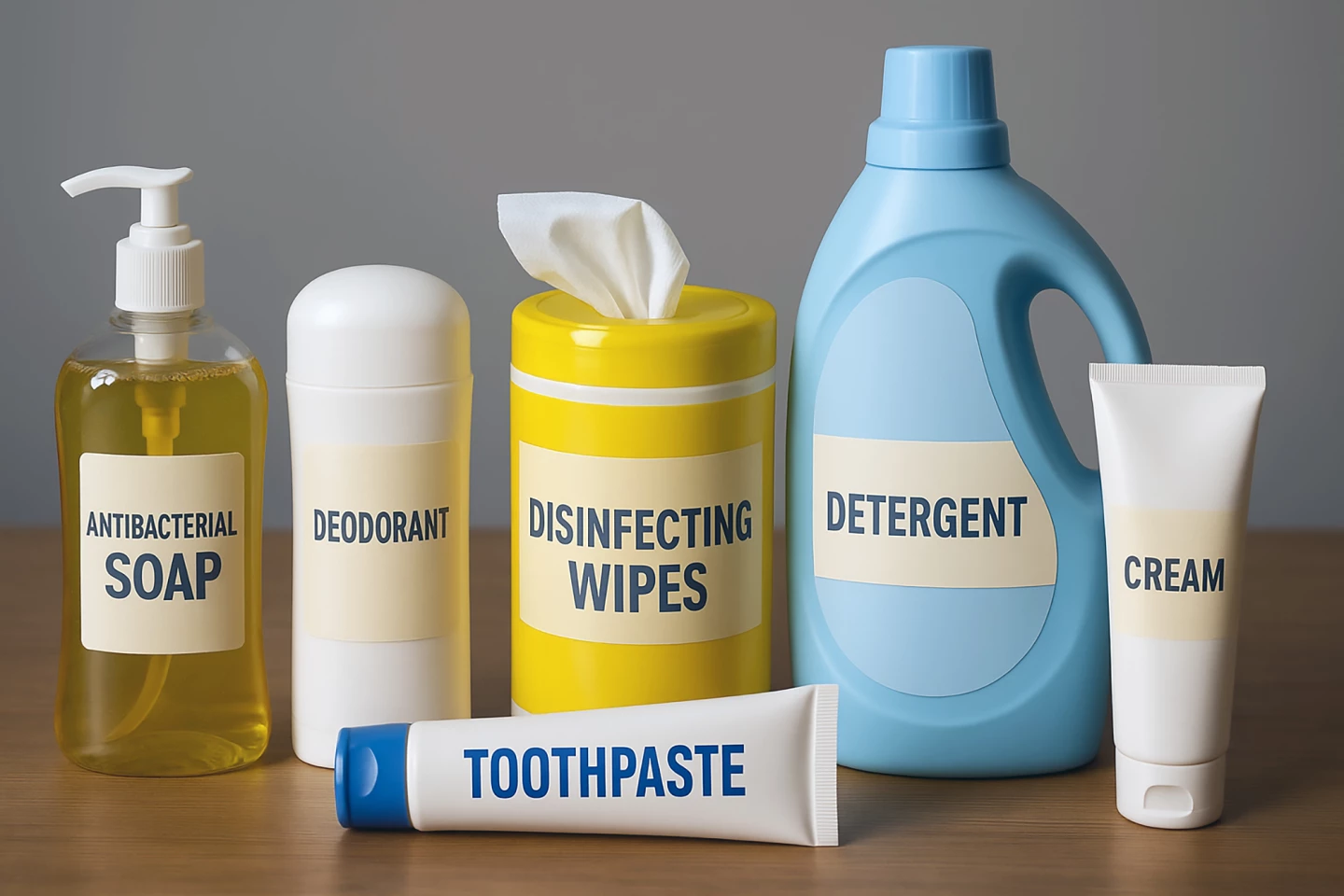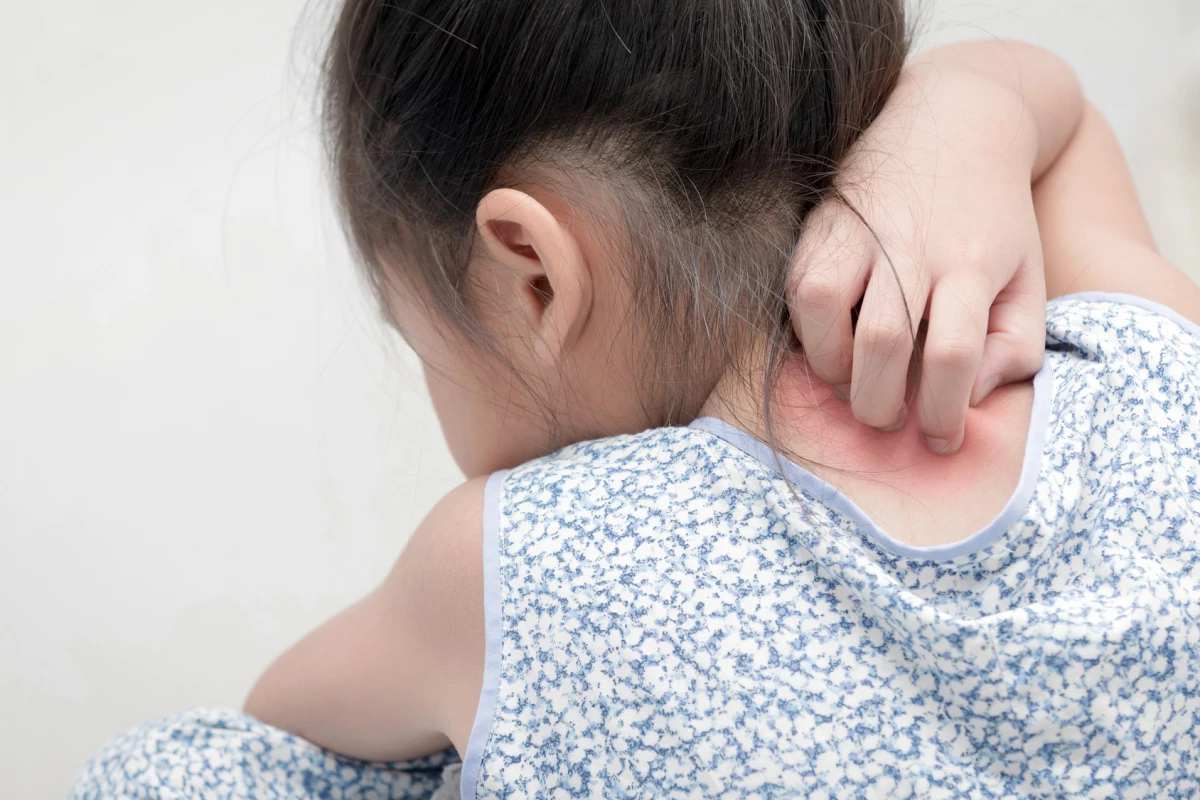Children exposed to the common antimicrobial triclosan were more likely to develop allergic symptoms, a new study has found. It raises fresh concerns over the health impacts of a chemical widely used in everyday products.
A broad-spectrum antimicrobial, triclosan is found in many consumer products, from soaps and hand sanitizers to toothpastes and deodorants, and household cleaning products to textiles. Triclosan is so ubiquitous that while some countries have banned its use in certain products, the compound remains a health concern due to its potentially toxic properties.
A new study, led by scientists from Brown University and the University of Massachusetts (UMass) Amherst, has found that children exposed to triclosan had a higher likelihood of suffering from allergy-related health issues.
“The research showed a clear connection between this chemical and the allergic conditions we looked at,” said senior author Joseph Braun, a professor of epidemiology and director of the Center for Climate, Environment and Health (CCEH) at Brown’s School of Public Health. “What that all means is antimicrobial chemical exposure during susceptible periods of life, childhood in this case, might increase the risk of allergic disease.”
The researchers wanted to find out whether exposure to the chemical compound triclosan might be linked to eczema, hay fever (allergic rhinitis), or wheezing in children. They specifically looked at triclosan levels during pregnancy and throughout childhood.
They tracked 347 mother-child pairs from the Cincinnati-based Health Outcomes and Measures of the Environment (HOME) Study from pregnancy until the child turned 12. Triclosan levels were measured in urine samples collected from mothers at weeks 16 and 26 of pregnancy, as well as from children at up to 10 time points from birth to age 12. Health data about whether the children had symptoms of eczema, hay fever, or wheezing was obtained from caregivers at regular intervals.
After adjusting for factors such as the child’s age, sex, race, maternal age, tobacco exposure and household income, the researchers found that children with twice the level of triclosan in their urine were 23% more likely to report eczema symptoms. Those with twice the level of urinary triclosan were also 12% more likely to have hay fever symptoms. No meaningful association was found between triclosan and wheezing. These findings held up across several sensitivity analyses, including adjustments for handwashing frequency and parental asthma history.

Regarding gestational triclosan exposure, the researchers found no overall association with eczema, hay fever, or wheezing. However, child sex mattered. Males with higher triclosan exposure prenatally (before birth) had a higher risk of hay fever. For females, the risk was slightly lower.
“Triclosan is effective at killing many bacteria, fungi and viruses,” said Hannah Laue, the study’s lead author and an assistant professor of epidemiology at UMass Amherst. “While that’s useful for extending product shelf life or reducing odors in athletic wear, it can be harmful to humans. Our bodies rely on beneficial microbes to aid digestion and protect against pathogens. Exposure to triclosan may disrupt that healthy balance, leaving us more vulnerable to disease.”
The study has limitations. Triclosan is eliminated from the body quickly, so a single urine sample may not accurately represent ongoing exposure. Although the researchers used statistical models to minimize this. Symptom reporting relied on caregiver questionnaires rather than clinical diagnosis or lab tests, which may introduce reporting bias. The study didn’t directly measure immune biomarkers, allergic sensitization, or changes to the microbiome. And while the sex differences associated with gestational triclosan exposure were intriguing, further research is needed to confirm them.
Nevertheless, the study’s findings raise concerns, given the widespread use of the chemical compound and the fact that prior research suggests it messes with the body’s hormones.
“Some chemicals, including triclosan, can mimic or block hormones, potentially throwing essential systems into overdrive or shutting them down,” Laue said. “Triclosan has also been linked to reduced thyroid hormone levels, which are critical for healthy growth and development.”
The researchers hope their findings will encourage consumers to make safer choices by checking products for the presence of triclosan, until it’s regulated better or banned altogether.
“We hope that this will prompt companies to consider using safer antimicrobial chemicals of avoiding them altogether in their products,” Braun said. “Some companies do offer products that are labeled ‘triclosan-free.’ But we need better regulations to protect people from harmful chemicals.”
The study was published in the journal Environmental Health Perspectives.
Source: Brown University






